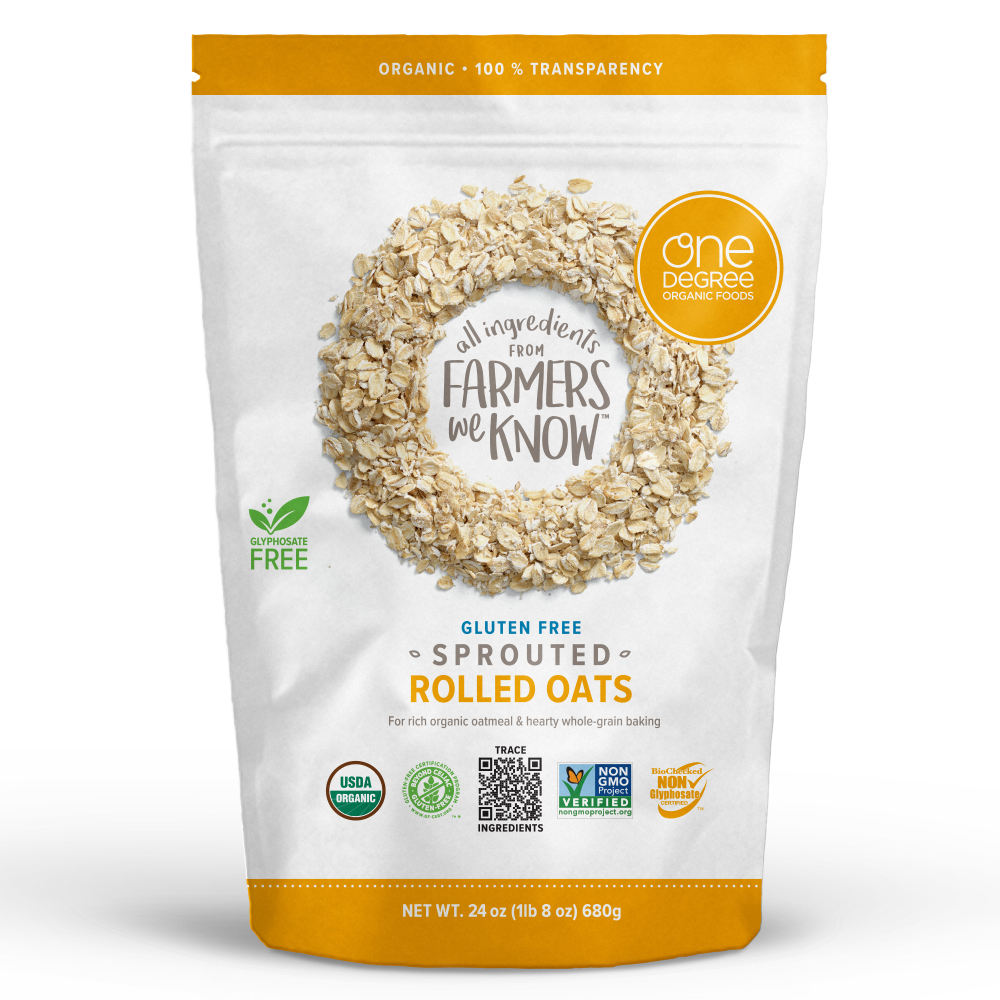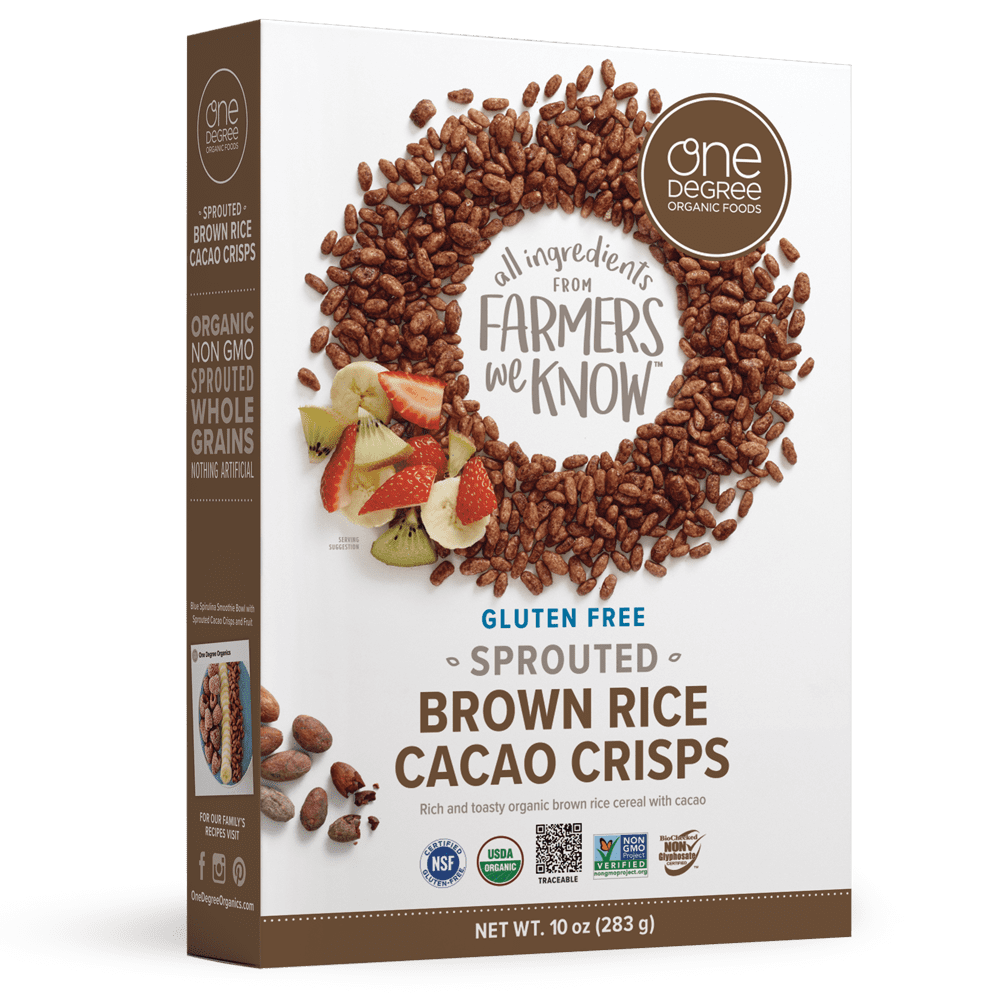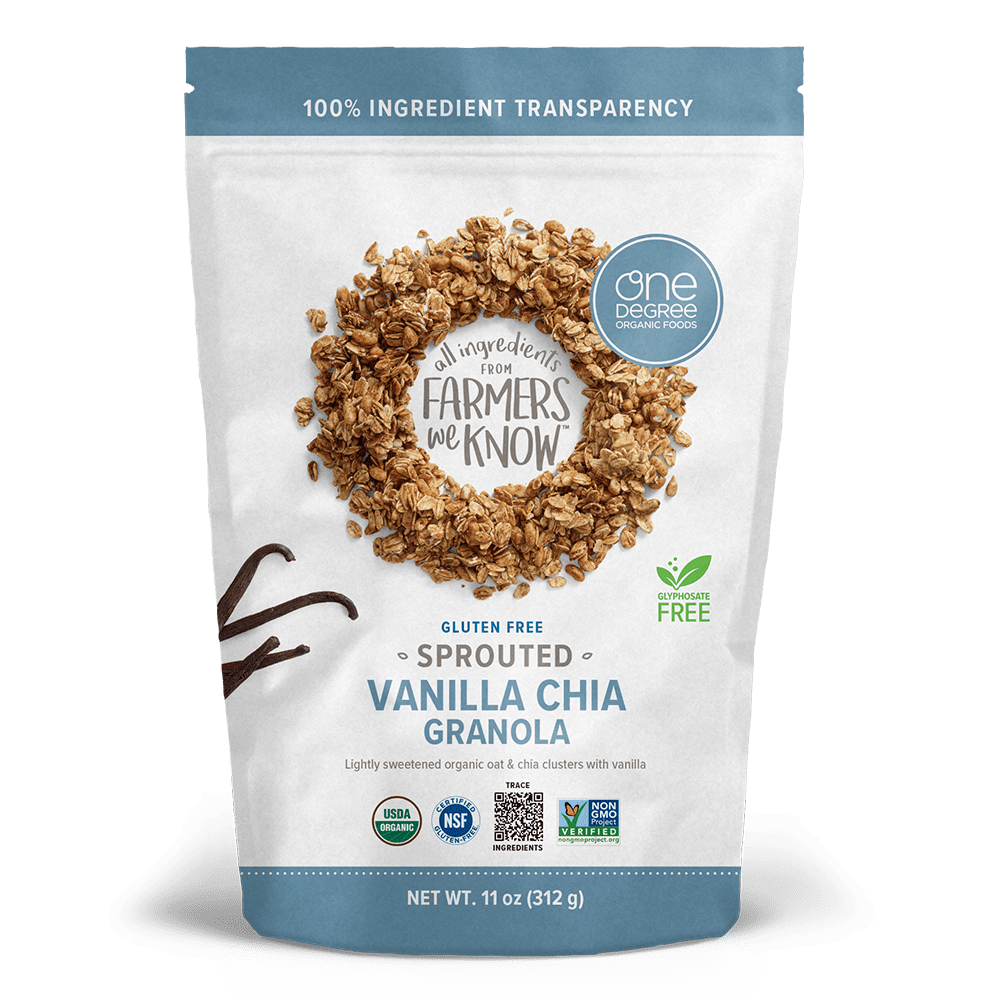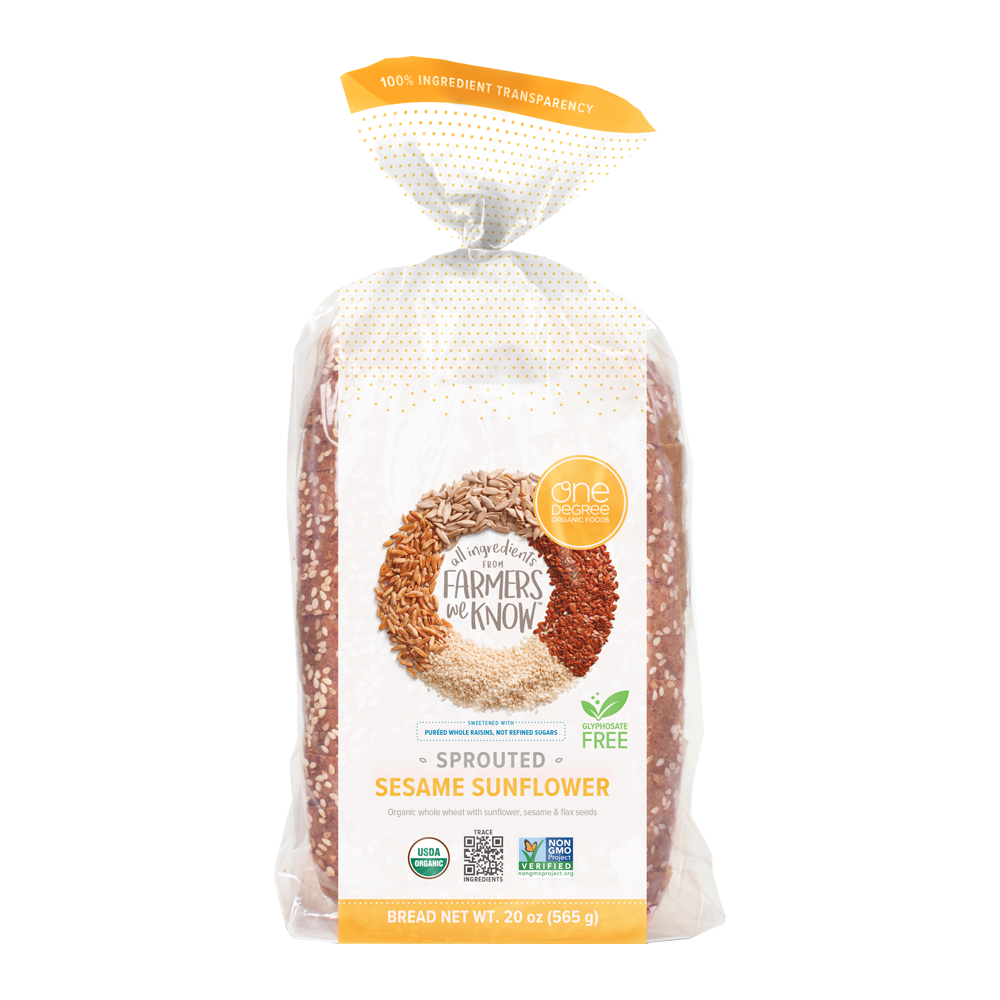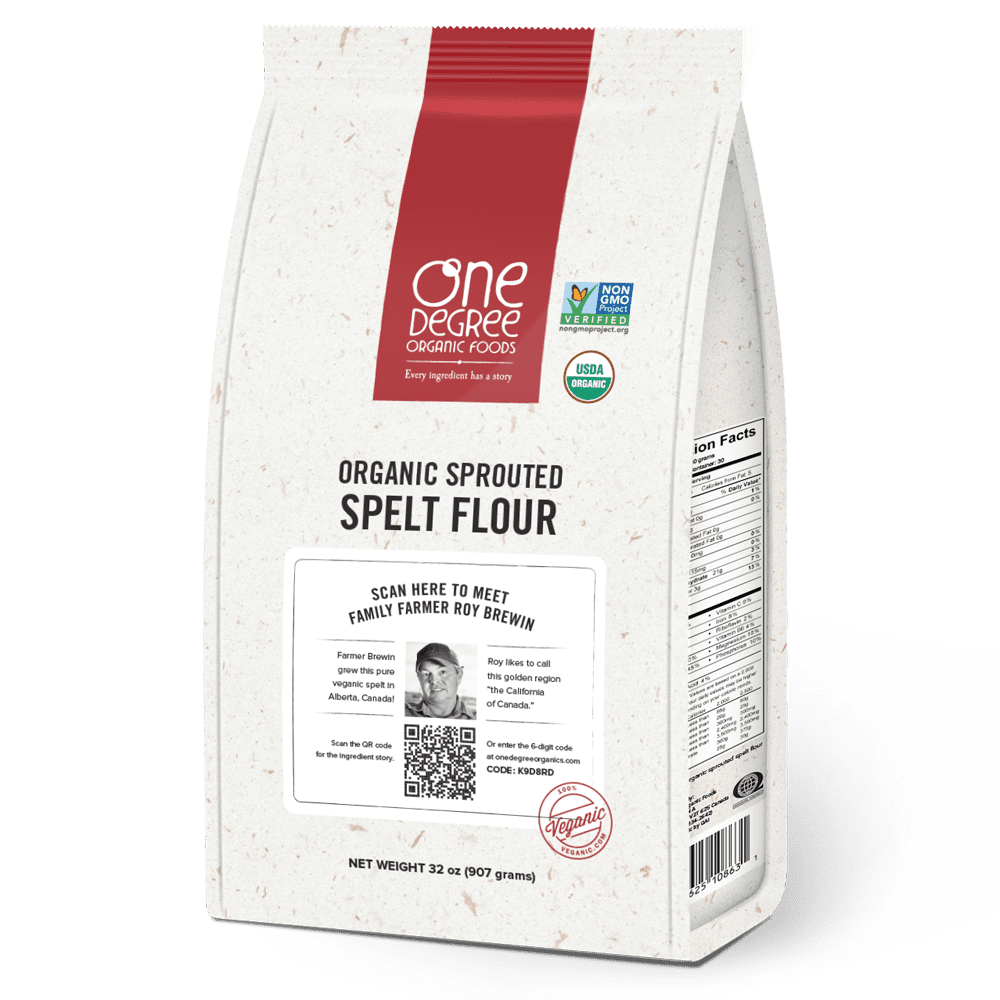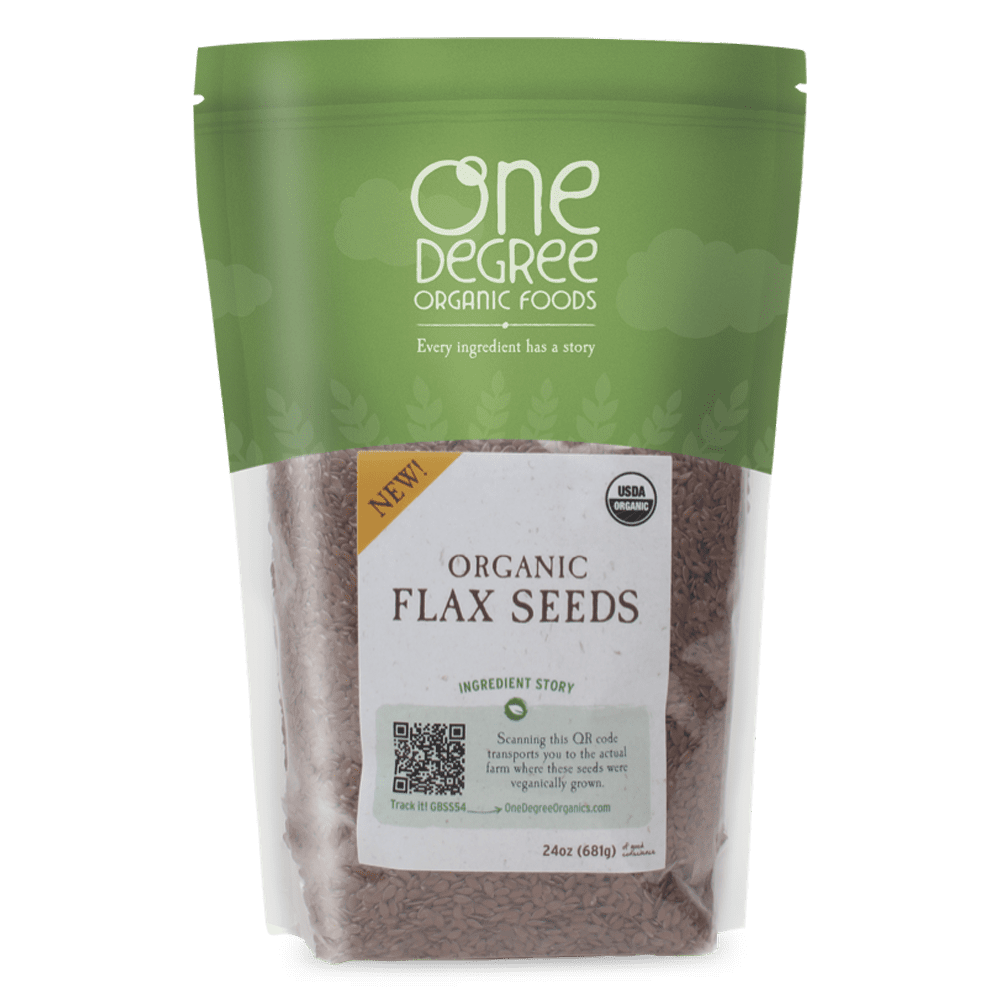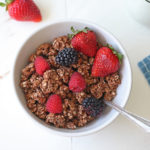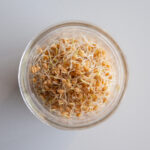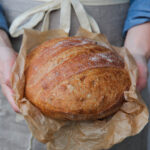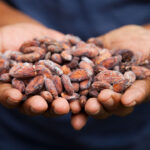Sourdough Bread & Sprouted Flours: Your Top Questions Answered By Experts!
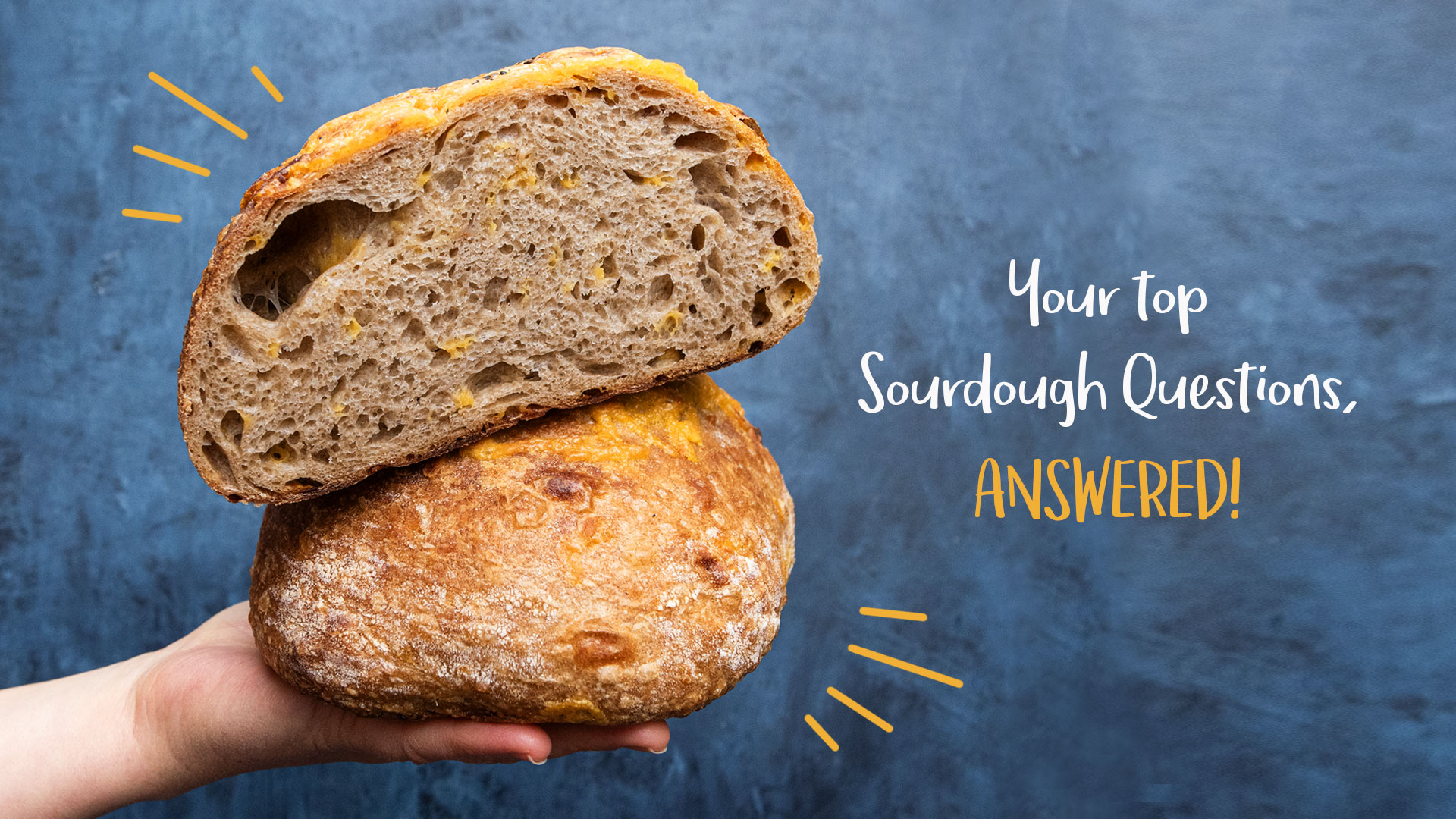
Sourdough is a tangy, chewy-centered, crispy-crusted bread that has inspired professional and home bakers alike to create and recreate recipes using different techniques, ingredients, and ratios. The art of perfectly baking sourdough bread requires a little experimenting and creativity from every baker.
Despite the endless sourdough bread recipes online with baking videos, tutorials and cookbooks, there are limited resources detailing how to use sprouted flour in baking sourdough bread. Many have reached out to us with questions about using our sprouted flours in baking sourdough, with some wondering if it would yield the same rise, taste, and texture as compared to regular flour.
This has inspired us to reach out to some professional bakers to help answer all of these questions all in one place. Join us as we knead into everything baking enthusiasts like yourself would need to know about baking sourdough bread with the goodness of sprouted flours!
Meet Our Expert Bakers:
Klola
Baker at Sourdough_Proven
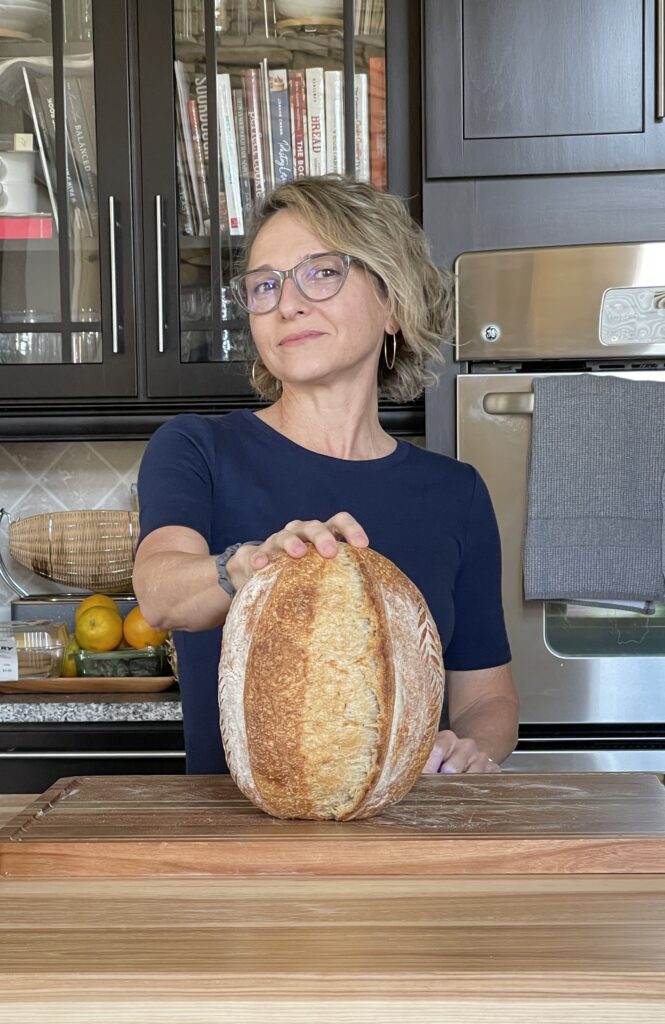
Klola began her sourdough baking journey in 2018 to take control of what she was consuming. She was tired of the extensive list of unpronounceable ingredients found- in store-bought bread and decided to explore the ancient art of bread-making. As she delved into baking, she discovered that it was her favorite hobby. She finds it therapeutic to mix, knead, wait for the dough to rise, and most importantly- enjoy the result of perfectly baked bread.
Kristyn
Owner & Baker at Old Oak Sourdough
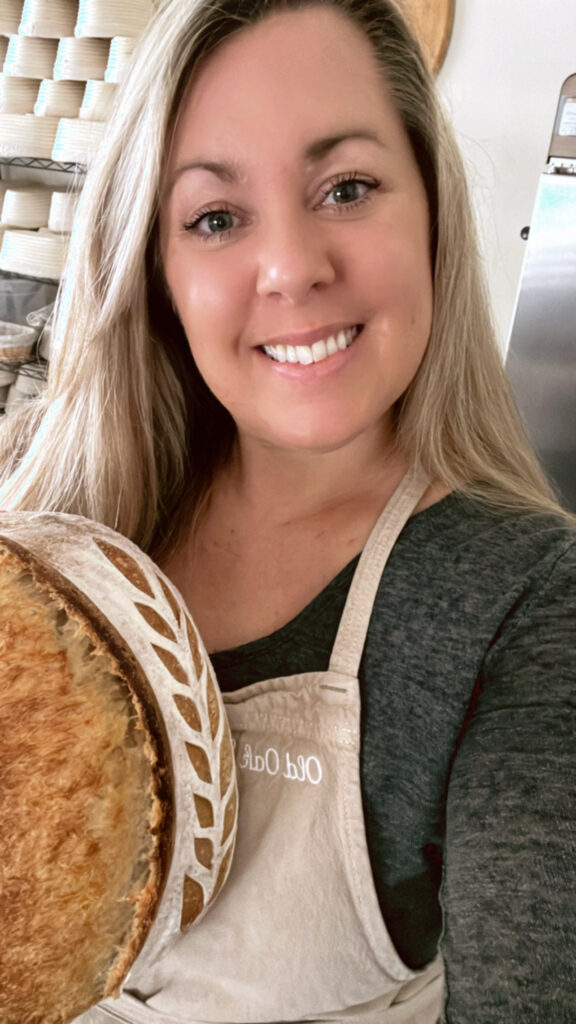
Kristyn is the owner & baker of Old Oak Sourdough, an organic sourdough micro-bakery in Southern California. Kristyn began baking sourdough in 2020 for her family to see if sourdough could be the answer to some of their health challenges. Getting back to real bread ingredients; organic sprouted flour, water & mineral rich salt with a proper long-fermentation was indeed the answer! Seeing the value of baking in this way was life changing & quickly Kristyn began baking for family & friends that were also struggling with gluten sensitivities & related health challenges. Over the past four years she has continued to grow in her passion for sourdough & baking for her community. What started as a couple loaves in her home oven, has increased to over 150 loaves per week out of her home-based cottage bakery. Baking sourdough has helped bring a new level of health & wellness to her family, as well as a new career & a unique way to serve her community.
Kathy
Head Baker at The Sprouted Oven
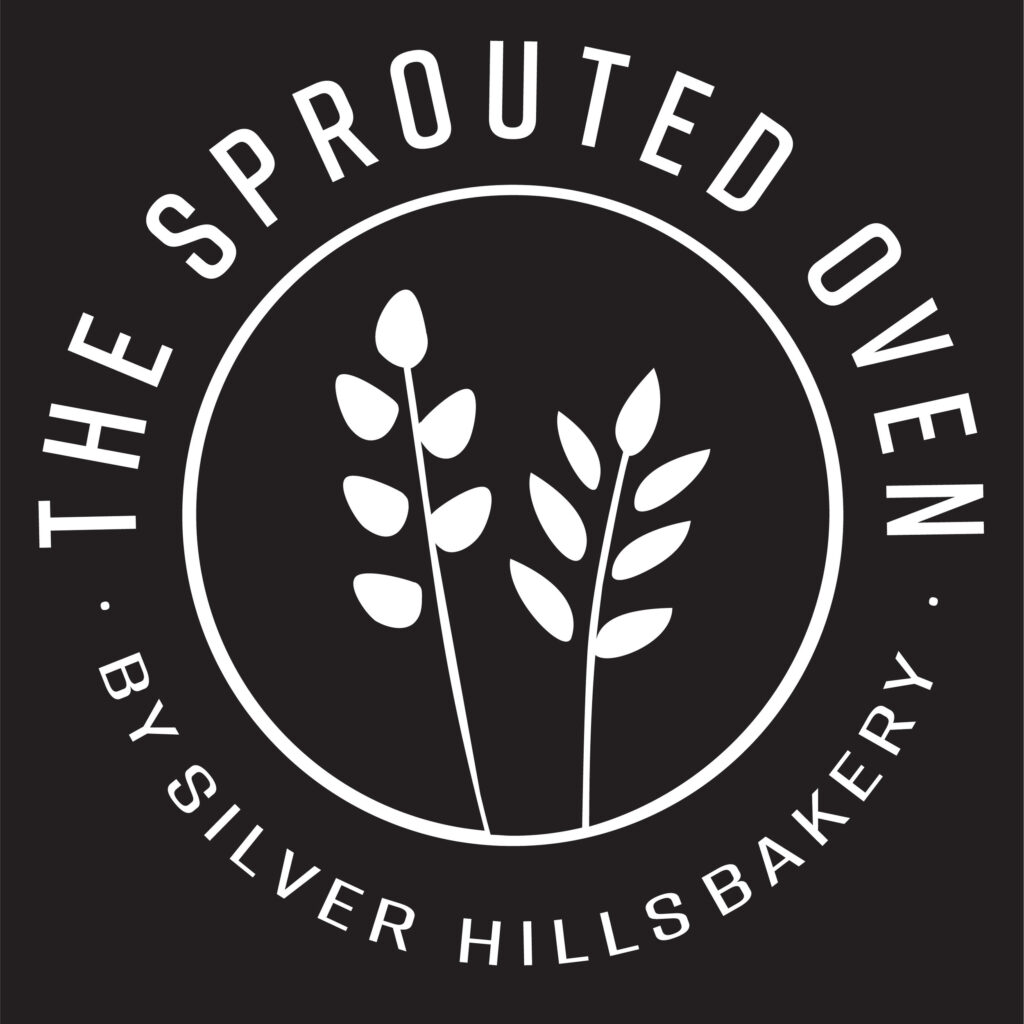
Kathy Aung has been the head baker at The Sprouted Oven for 2.5 years with more than a decade of baking experience- she has a passion for baking, is very creative, and loves transforming food into works-of-art. She finds being in the kitchen very therapeutic and specializes in baking bread and delicious pastries- which she hopes to continue doing for many years.
We would like to thank Kristyn, Klola, and Kathy for their professional opinions that helped to answer your top sourdough-related questions.
Sourdough Bread Origin
The origin of sourdough bread traces back thousands of years to the pyramid landscapes of Egypt. The historic wall paintings discovered within the ancient tombs have revealed the fermentation and bread-making processes that were first used by Egyptian locals.1
The internet was not around in those days, and the ingredients used in recipes were simple. Most breads baked in ancient times were made with water and flour. So, when a baker in Egypt left a flour and water mixture out in the warm desert climate while baking bread-you can imagine what thoughts must have been going through their mind when it began to double in size and ferment.
As time passed, sourdough bread spread into other parts of the world. The recipe was changed, improved, and adapted by different cultures. Eventually, sourdough became one of the most popular breads for its chewy inside, crispy outside, and tangy baking aroma
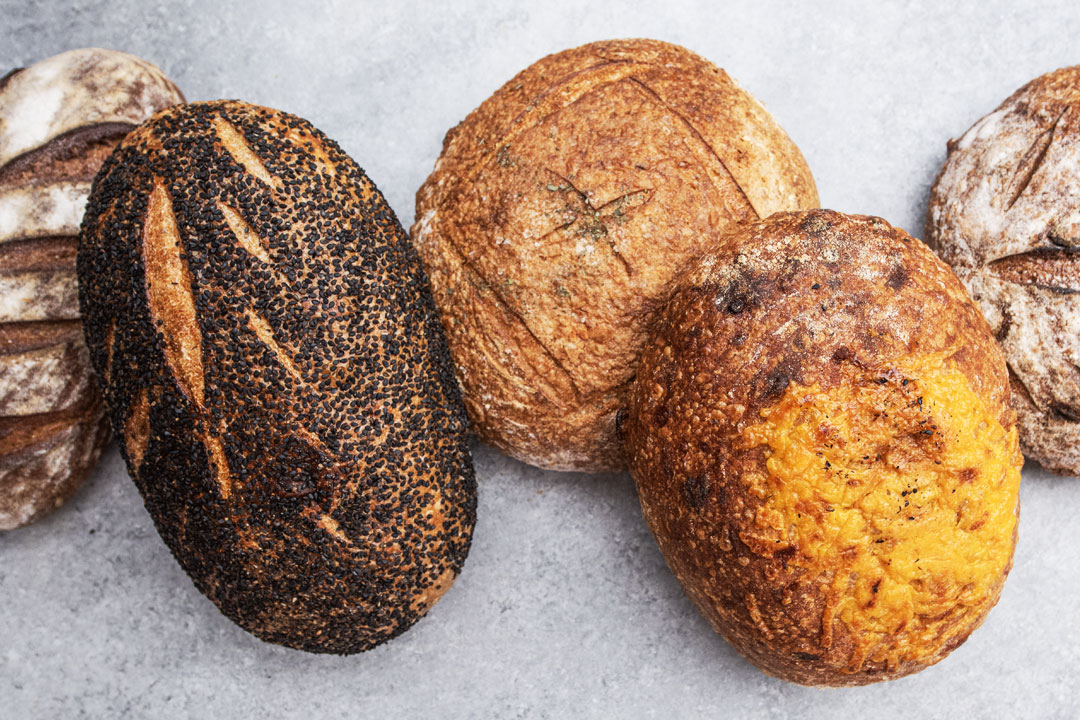
How To Make Sourdough Bread?
It’s important to remember that not everyone bakes bread in the same way, and that’s the beauty of the process. Finding what works and what doesn’t is a personal journey. The answers and opinions provided below are based on the bakers’ experiences using sprouted flours and different ingredients. Please keep in mind that your results may be different from their end results. However, the valuable insights provided in this blog could help you better understand the uses of sprouted flours when baking sourdough bread.
Perfecting the process of baking sourdough bread involves a little trial and error, so don’t be afraid to experiment. Who knows, you may discover a sourdough bread recipe that outshines all the other recipes out there.
Making A Sourdough Bread Starter
The starter is one of the most essential steps behind the perfect rise and taste of sourdough bread. The sourdough starter was an accidental discovery that improved the taste and texture of bread through fermentation.
The process of baking sourdough bread has been refined over time, with improvements made to both techniques and ingredients. Despite these changes, the main ingredient of sourdough, which is flour has remained unchanged. It plays a significant role in baking a delicious fermented loaf of sourdough bread and its the perfect ingredient question to kickstart this Q&A.
Q: Can Sprouted Flour Be Used to Make a Sourdough Starter?
Kristyn: Yes, you can easily convert your established starter by feeding it sprouted flour. I converted my very mature bread flour-based starter over to a sprouted spelt starter and within one feeding it was very active. Daily feeding will keep it very active and strong. I find converting an established starter over to be a great way to grow a new starter, but you can also build a sprouted flour from scratch, it will just take approximately 2-4 weeks to establish it and allow the bacteria levels to balance out for baking use.
Klola: Yes, absolutely. Sprouted flour tends to have more nutrients and enzymatic activity and can potentially help to kickstart fermentation faster.
Kathy: Yes, sprouted flour can be used in a starter. We are currently using sprouted rye flour as a rye starter for our sourdough. When we make our sourdough breads, we use 50 percent rye starter and 50 percent white flour starter.
Q: Will Sprouted Flours Change the Outcome of a Starter?
Kristyn: In my experience with using the sprouted spelt flour in my starter, it will double and be very active, however it will have a shorter peak window for use because with the sprouted flour containing the bran, germ and natural oils, these factors result in a faster fermentation.
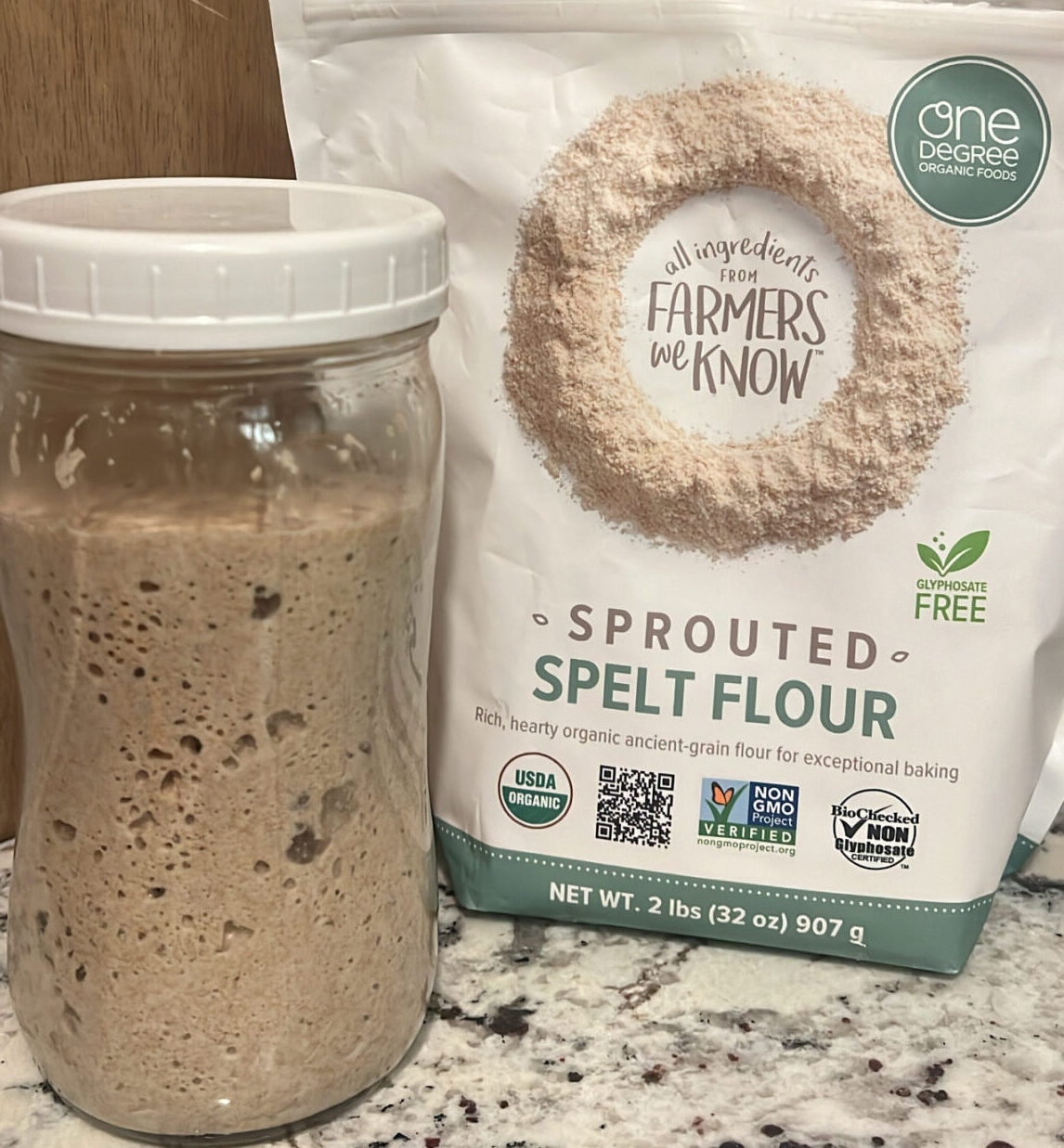
Image Taken By:@oldoaksourdough
Kathy: No not compared to other whole grains. Sprouted flours are easier to use and need a shorter time to ferment, they have more flavor, so the odor and rise of your starter could differ from starters made with regular flour.
Klola: The starter may have a slightly nutty aroma from the sprouted flour. As fermentation progresses, it will develop a tangy, sour smell characteristic of mature sourdough starters. The specific aroma can also vary depending on the strains of yeast and bacteria present in the starter. Sprouted flour tends to be more absorbent, which can result in a starter with a thicker or stickier consistency.
Q: What Considerations Need to Be Made When Using Sprouted Flour in A Starter?
Klola: Fermentation rate: Keep a close eye on your starter progress and be prepared for faster fermentation. Feeding schedule: Since sprouted flour may ferment faster you may need to feed it more frequently to maintain its balance. Water absorption: Sprouted flour absorbs more water. Be prepared to adjust the hydration level to achieve desired consistency.
Kathy: The stiffer the starter mixture is, the better. When making a starter, use more flour and less water- this will slow down the fermentation process. Slowing down the fermentation process will create a nice rise in the starter and balance out the pH level in the starter. If you have a higher water ratio to flour, especially flours with less gluten, the fermentation process will speed up, resulting in a flat and lifeless starter.
Kristyn: I would recommend watching your starter closely as it reaches its peak and aim to use it right away as your “peak window” may be a shorter window compared to a strong bread flour-based starter.
Q: What Is Your Sprouted Flour Starter Recipe?
Klola: You will need 30 grams sprouted flour (sprouted wheat or sprouted spelt flour), 30 milliliters water, food scale, two glass containers and a silicone spatula.
Kristyn: I like to feed a 1:5:5 ratio because I keep a low volume of starter to help prevent waste, but you can adjust easily depending on how much starter you like to keep on hand/ your baking schedule/timing.
 Image Taken By:@oldoaksourdough
Image Taken By:@oldoaksourdough
Kathy: This is a multi-day step process. The first phase (the sponge) recipe would be 3.5 Tbs whole rye flour and ¼ cup pineapple juice. If the starter itself has a very strong acidic smell, and has deflated, I throw out half and place the remainder in a new, clean container and add more flour and water. The ratio for the feed is 1:1 (flour and water).
Q: When Is a Sourdough Starter Ready to Use?
Kathy: Depending on which flour starter is being used, most often a starter should have a sweet, “pleasant” fermentation smell. It should have a nice rise and have a sponge-like consistency. It should have an ‘inflated’ look and have gas bubbles trapped within the starter. The process of making a starter can take up to 2 weeks depending on which type of flour is being used. There is also a way to test if a starter is ready; drop a spoonful into a bowl of room temperature water. If it sinks, it is not ready and needs more time to ferment. If it floats or is close to it, it is ready to use for breadmaking. Touch it on your tongue and make sure it has a tart sweet flavor.
Kristyn: After a fresh feeding, as it grows and reaches peak, it will become pillowy and airy, looking like a cloud with bubbles throughout the starter. It will smell slightly sweet and should be semi- thick. This will take several hours based on your feeding ratio (using an established starter).
Klola: The starter is ready when it has more than doubled in size, with bubbles visible on top and along the sides, and emits a sweet smell.
Baking Sourdough Bread
When we try out new recipes in our kitchen, we often find ourselves liking some ingredients more or less than others. Sometimes, we substitute certain ingredients to make the recipe healthier or tastier. The same can be said when baking sourdough bread. From the different types of flour used to make sourdough to the easy and not-so-easy recipes that follow, let’s not forget the endless techniques and various proofing methods.
That is why we are slicing into the top questions and uncovering what happens when using sprouted flour, different ratios, and recipes to provide a clearer understanding of how to bake sourdough bread.
Q: Can Sourdough Bread Be Made with Sprouted Flours?
Kristyn: Absolutely! Sprouted flours bring a lovely taste, flavor and crust. You can begin incorporating a ratio of sprouted flours into your recipe as you ease into baking with them, or you can leap right in with sprouted whole wheat or spelt in a one-for one replacement. You may need to adjust your hydration for your recipe when using sprouted flours, but you can start out with a mid-level hydration as a good base.
Kathy: Sprouted flours are perfect for baking sourdough bread. Sprouted flour provides faster fermentation, and adds more flavor, and nutrition, and when it comes to baking bread less kneading is required thanks to the sprouting process the grains go through before being ground into a flour that can be baked. At The Sprouted Oven we are currently making sourdough with sprouted spelt, sprouted red ife, and sprouted rye flours.
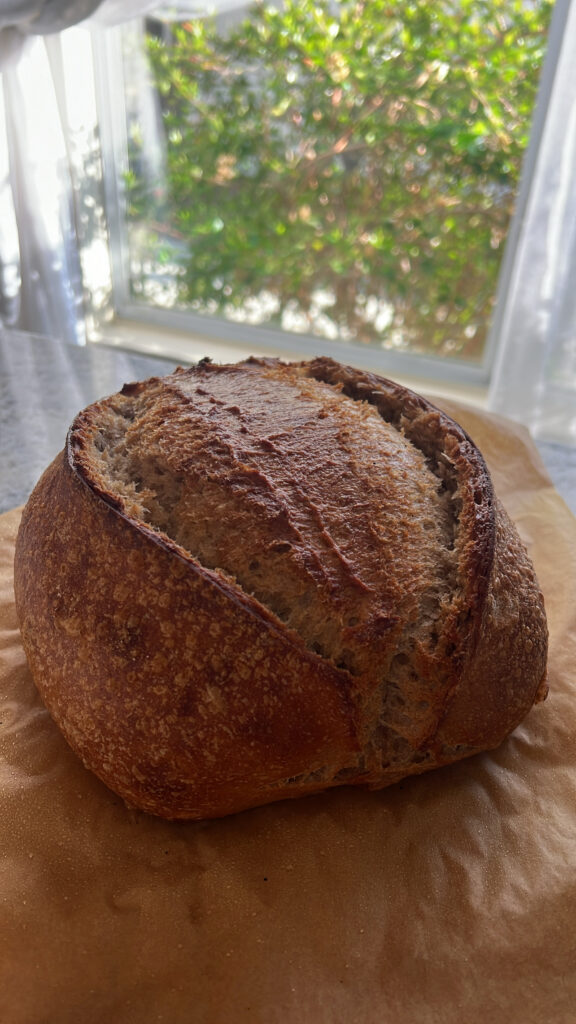 Image Taken By:@oldoaksourdough
Image Taken By:@oldoaksourdough
Klola: Yes, you can make delicious sourdough bread with sprouted flour, enjoying both the nutritional benefits and the unique flavor profile.
Q: What Types of Sprouted Flours Work Well with Baking Sourdough Bread?
Kristyn: Each type of sprouted flour has its unique traits and will respond a bit differently. I love using sprouted spelt flour because it is a naturally lower gluten grain, which has many health benefits but also means you may not get a huge rise and bloom in the oven on its own, but it will be extremely flavorful and soft. I also love to use sprouted whole wheat and find that it is a good strong flour for freeform artisan loaves.
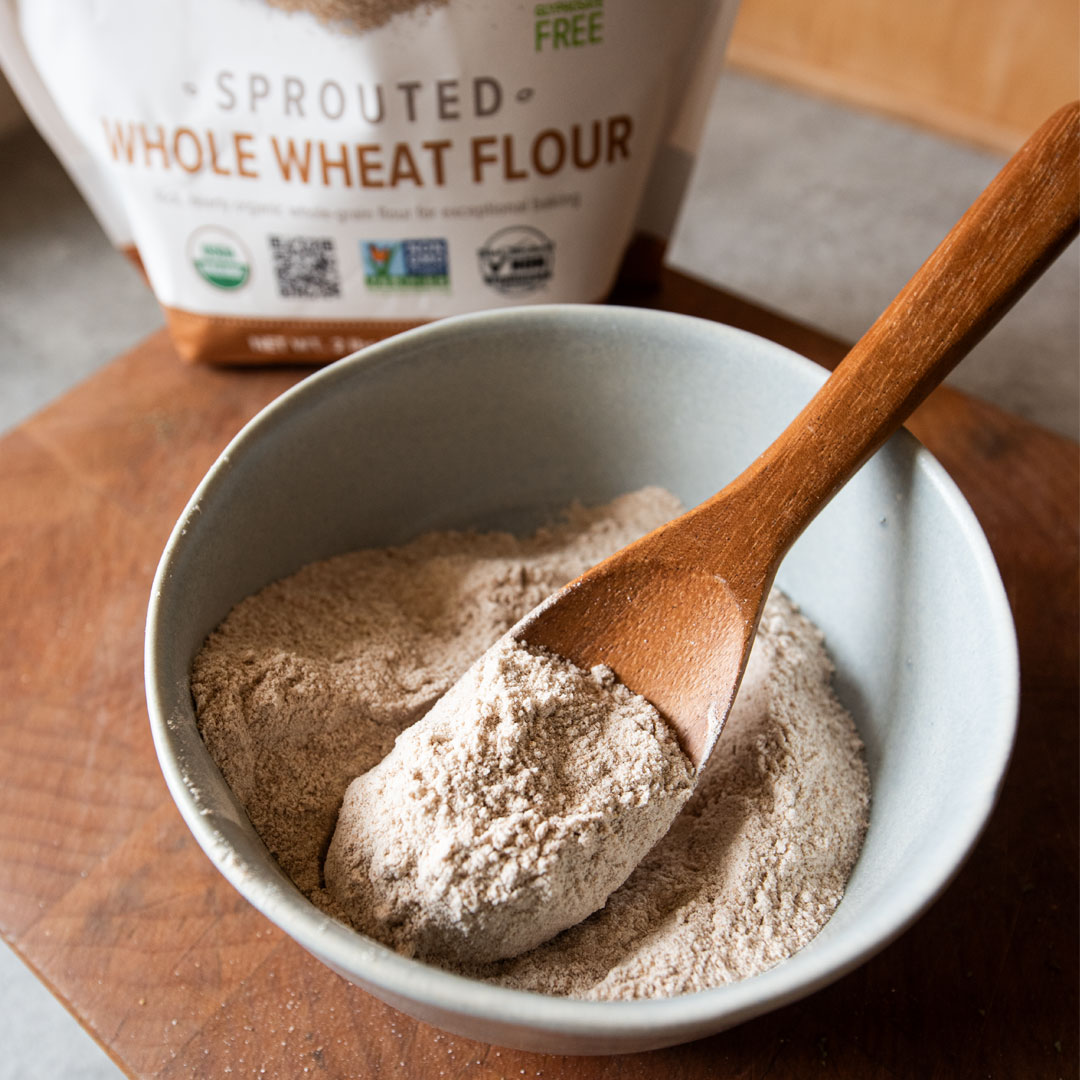
Klola: In my experience with sprouted flour has been with sprouted whole wheat and sprouted spelt with awesome results. You can replace regular whole wheat with sprouted flour 1:1.
Kathy: Most sprouted flours will work the same as the whole grain unsprouted flour. We love sprouted spelt, sprouted red fife and sprouted rye flours
Q: Can You Replace Regular Flour Entirely with Sprouted Flour When Baking Sourdough Bread?
Klola: Sprouted wheat behaves similarly to whole wheat flour but has improved taste, texture, and volume. If you are just starting to use whole wheat flour, it is a good idea to start with a small amount and see how you like the flavor. You can always add more flour to your recipe if you want a stronger flavor. While you can replace all the white flour with sprouted flour, it may yield different results due to its lower gluten and higher fiber content.
Kristyn: Yes, you can! Each sprouted flour will have its unique traits. If you want to strengthen your sprouted flour with a higher protein bread flour, you can start with a 25/75 or 50/50 blend using strong bread flour alongside your sprouted flour and continue to adjust as needed. Besides sourdough bread, I love using 100% sprouted flours in muffins, cookies, cakes etc. Any bake can benefit from sprouted flours, as well as using sprouted “discard” starter in recipes like pancakes etc.
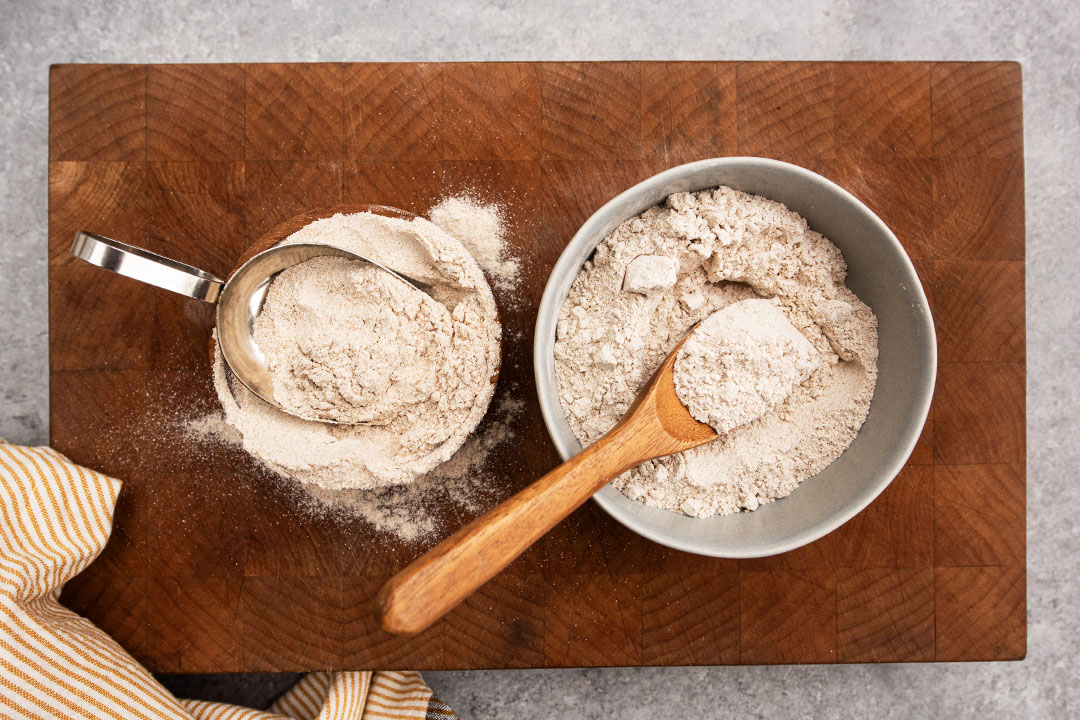
Kathy: From my experience, it is possible to replace regular flour completely with sprouted flour in any sourdough bread recipe. However, the texture and density can change. Sprouted flour would behave similarly to regular. For instance, making bread with 100 percent sprouted whole wheat flour will create a dense, wet, and heavy bread, but it will have a lovely, rich taste. I believe that bread can be baked entirely with sprouted whole wheat flour, but it may result in dense sourdough bread.
Q: What Ratio of Sprouted Flour Do You Use in Your Sourdough Recipe?
Klola: That would depend based on the type of bread you want to achieve. Again, sprouted wheat behaves similarly to whole wheat flour. I have used 10% up to 60% sprouted flour in the recipe but you can make bread using only sprouted flour. A higher ratio will translate in more complex nutty/tangy flavor and more dense crumb bread.
Klola’s Rustic Sprouted Whole Wheat Bread Recipe
Kristyn: My baking focus is exclusively on sourdough. If I want to use 100% sprouted spelt, I prefer to use a sandwich tin to help give the loaf support and structure while baking. However, If I am baking a freeform artisan loaf, I like to use a blend of 50/50 sprouted spelt flour and strong bread flour or sprouted whole wheat and bread flour.
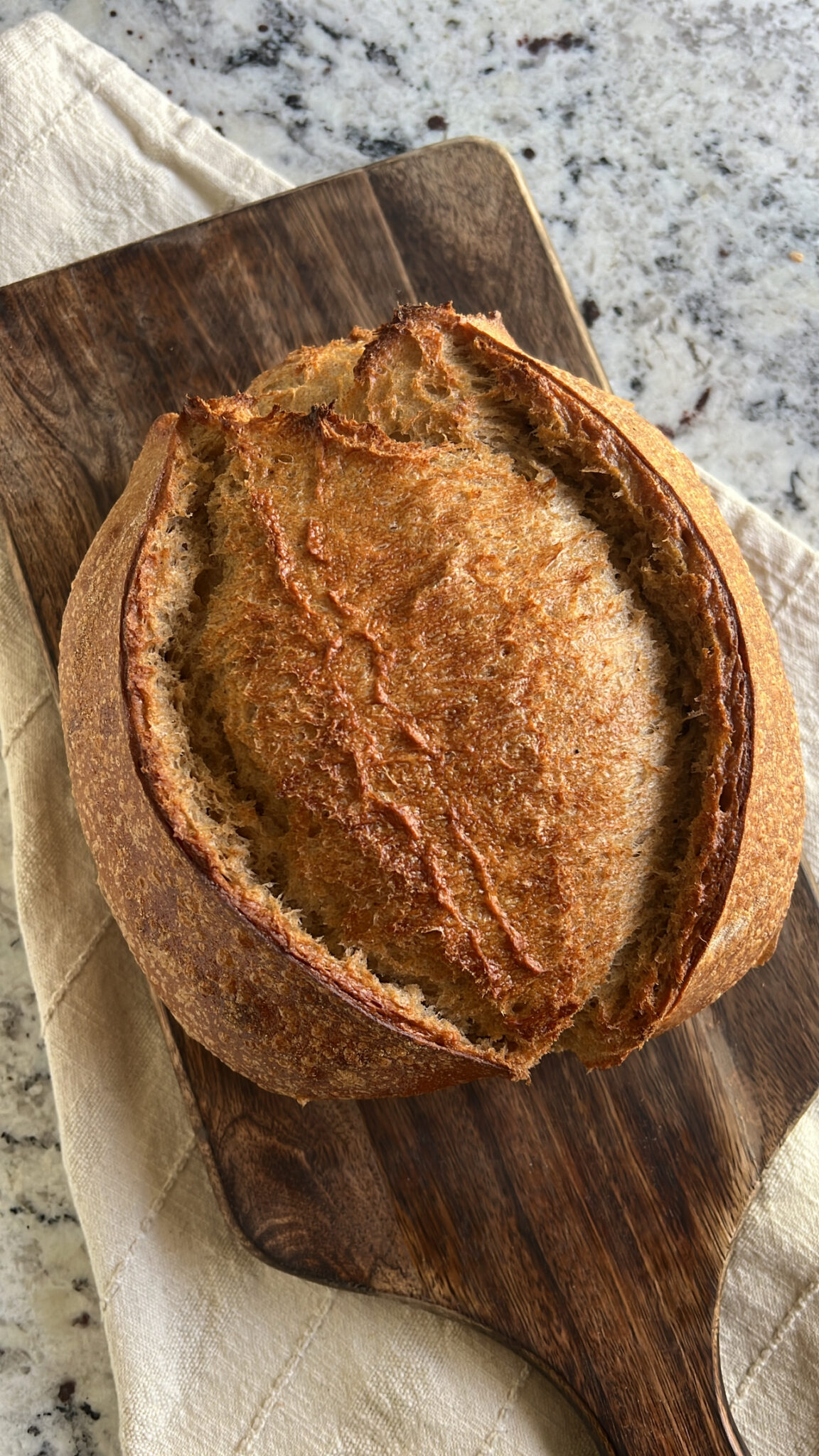 Image Taken By:@oldoaksourdough
Image Taken By:@oldoaksourdough
Kristyn’s Maple Sprouted Spelt Sourdough Bread Recipe
Kathy: In our whole grain sourdough recipe, we are currently using 22 percent sprouted spelt flour and 11 percent sprouted red fife flour. For the sponge recipe (whole grain sourdough), we are using 17 percent sprouted spelt flour and 8 percent sprouted red fife flour. For our seedy hearth sourdough, we are using 41 percent sprouted spelt and 16 percent sprouted rye flour. For our rye molasses sourdough, we are using 50 percent sprouted rye flour.
Q: Are There Any Adjustments Needed in The Hydration Level When Using Sprouted Flours?
When making sourdough bread, it’s crucial to pay attention to the hydration levels of the dough and starter. The hydration level refers to the amount of water that is present in the sourdough bread dough. For instance, if the dough has a 100% hydration level, it means that equal amounts of water and flour were used.
Kristyn: I find that sprouted, wholegrain flour can be a bit thirstier and hydrates well. I recommend starting at 75-76% hydration and you can increase as you are comfortable handling a more hydrated dough.
Klola: Sprouted flour absorbs more water than other flours, you will need to add 10 to 20% more liquid to your recipe.
Kathy: As with other whole grains, when using sprouted flours, it is best to use less hydration in the dough.
Q:How Does Sprouted Flour Impact the Taste & Texture of Sourdough Bread?
Kristyn: Sprouted flours bring a lovely taste to your bread because of the process of sprouting and milling the whole grain. You may notice a light sweetness and you will notice a lovely crust color from the wholegrain and natural oils present.
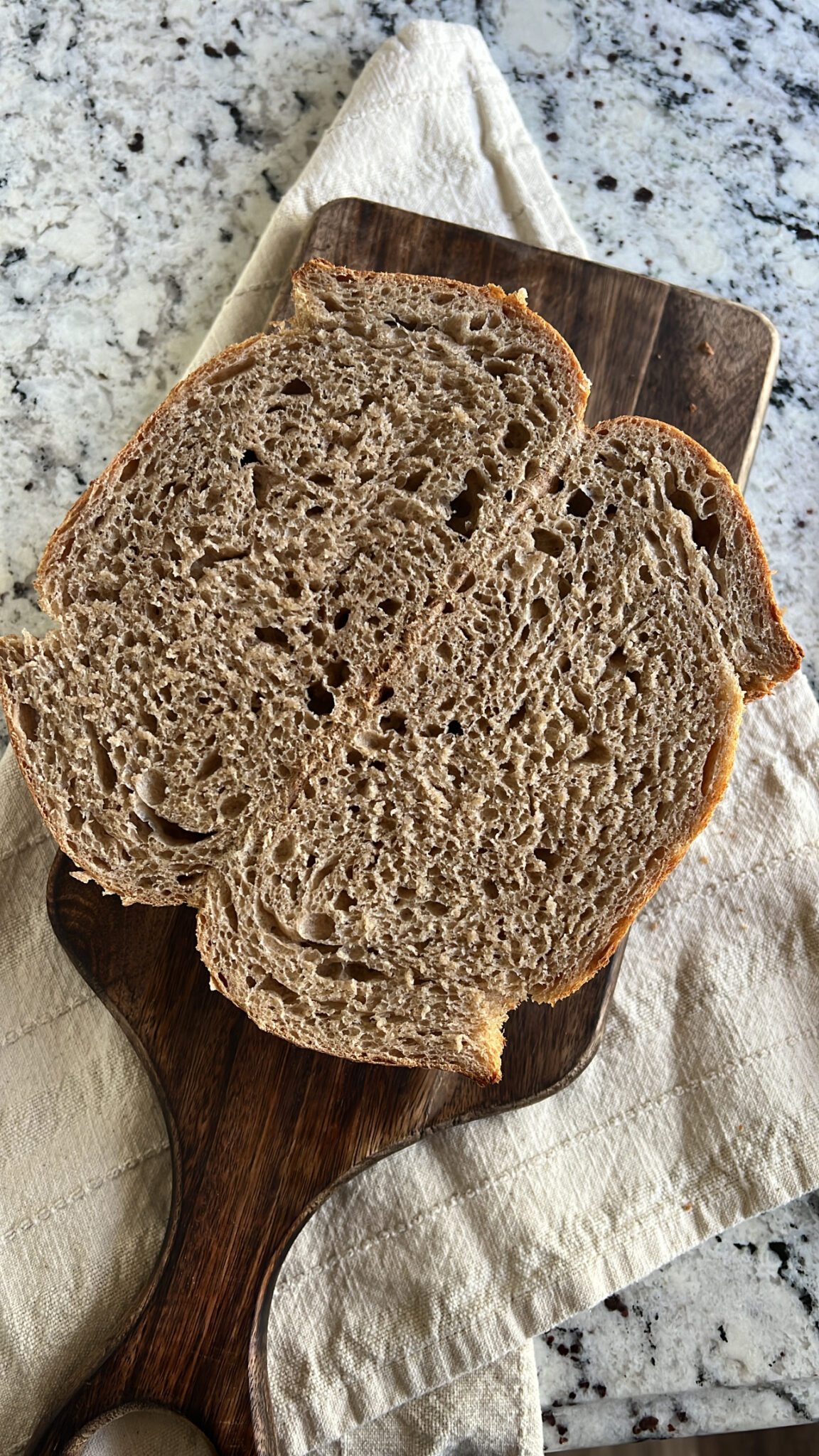 Image Taken By:@oldoaksourdough
Image Taken By:@oldoaksourdough
Kathy: From what I have tasted personally, sprouted sourdough has a richer, dense crumb with a thick crust. Since sprouted flour is made from the whole grain, it results in a slightly heavier loaf. As with other whole grains, it can also have a weak gluten structure which can prevent the dough from having a nice ‘bloom’ in the oven so using a mixture of sprouted flours and white flour will give you the nicest texture and flavor.
Klola: Sprouted flour tends to have a slightly sweeter and nuttier flavor compared to regular Whole Wheat flour. This can add depth and complexity to the flavor profile of sourdough. The sprouting process breaks down some of the starches and proteins in the grain, making them easier to digest and lighter texture in the finished bread. Sprouted flour tends to absorb more moisture, which can affect the hydration level of the dough. This can lead to a dough that is slightly stickier and more elastic, resulting in a bread with a moist and chewy texture.
Ingredients Matter in Baking
We strongly believe in using only high-quality ingredients in our products and recipes. We hold this belief not only for their nutritional benefits but also because the quality of ingredients plays a crucial role in the ease of baking and the overall taste of the final product.
Regular flours contain higher levels of gluten, more ingredients and inorganic grains, and substances with chemicals that provide little benefits. In contrast, sprouted flour is a simple ingredient that does not require complex techniques to use. It can be used as a perfect substitute or in combination with other organic flours to enhance your recipes with sprouted nutrition.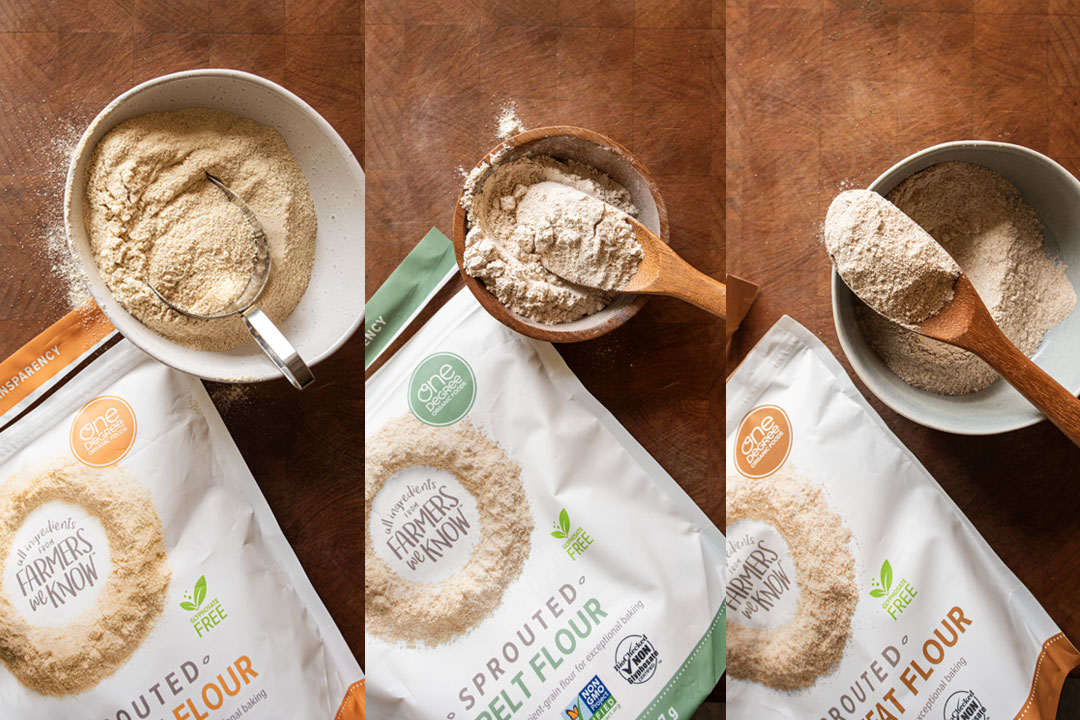
Sprouting grains increases the bioavailability of micronutrients like phosphorus, iron, zinc, calcium, magnesium, manganese, potassium, and folic acid. 2
The enzymatic activity during the sprouting of grains allows the sprouted wheat to form stronger gluten bonds in the making of bread, which means that much less kneading is required.3
Our Sprouted Flours Are Perfect for Sourdough Baking
All of our organic sprouted flours- are made from whole grains that are transformed into nutritional powerhouses thanks to our unique sprouting process, which locks in more nutrients and flavor and ground into the finest flour that is perfect for baking anything from sprouted sourdough bread to sprouted cookies, cakes, pies, tarts, and even your favorite breakfast muffin with ease!
Sprouted Whole Wheat Flour
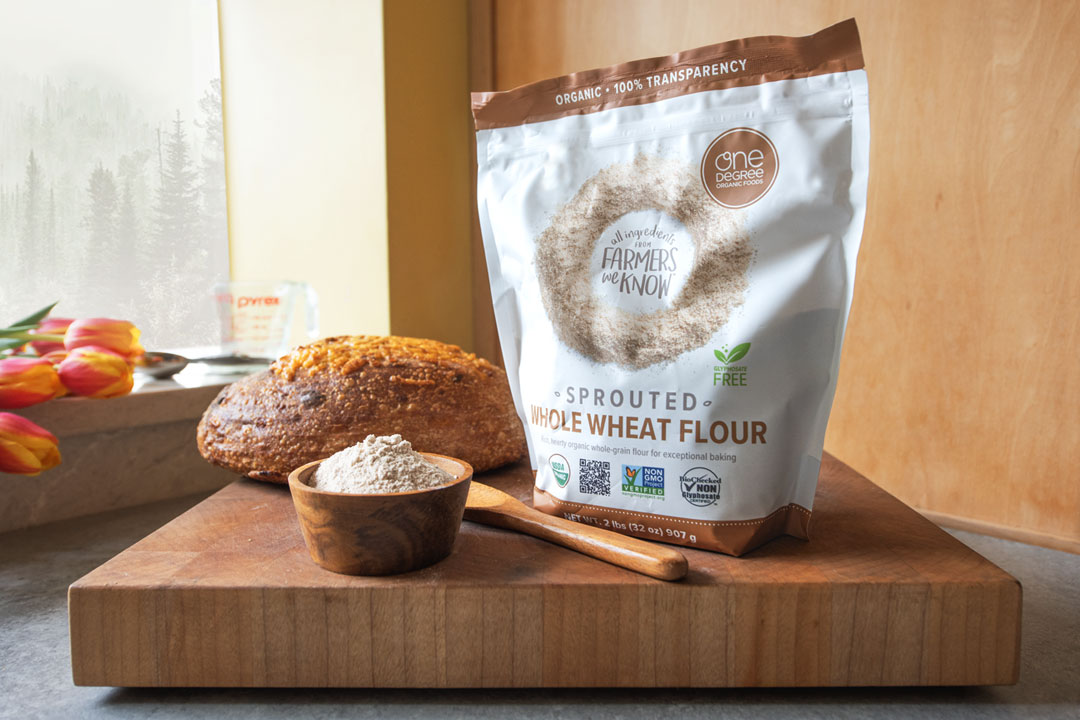 Try Our Whole Wheat French Bread Recipe & Enjoy the Goodness of Our Sprouted Flours!
Try Our Whole Wheat French Bread Recipe & Enjoy the Goodness of Our Sprouted Flours!
Taste: Sweet, nutty, and milder than regular whole wheat flour.
Ingredients: Our whole grain includes the bran and germ, and all key nutrients. Grown veganically, without chemicals, or animal-based fertilizers, then sprouted to maximize nutrition and digestibility.
Best used for: Our Sprouted Whole Wheat Flour is a versatile ingredient that is perfect for baking pancakes, muffins, cookies, pasta, cakes, and you guessed it-baking sourdough and other types of bread!
Sprouted Spelt Flour
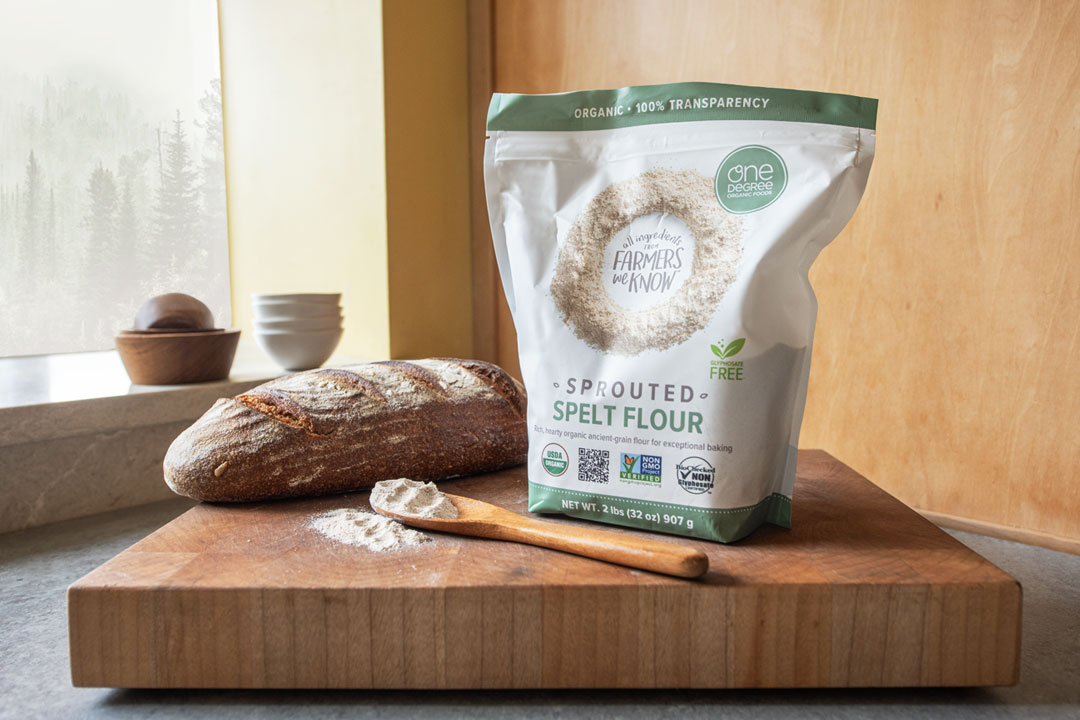 Test Our Sprouted Spelt and Whole Wheat Flours in these Sprouted Sourdough Recipes!
Test Our Sprouted Spelt and Whole Wheat Flours in these Sprouted Sourdough Recipes!
Taste: Slight nutty sweetness.
Ingredients: Spelt is a pure non-hybridized, nutritious ancient grain. Grown veganically, without chemicals, or animal-based fertilizers, then sprouted to maximize nutrition, digestibility, and flavor.
Best used for: This sprouted flour is great for both sweet and savory baked goods. Sprouted Spelt flour has more flavor than traditional spelt flour and can be a healthier substitute for recipes that require all-purpose flour.
Sprouted Khorasan Flour
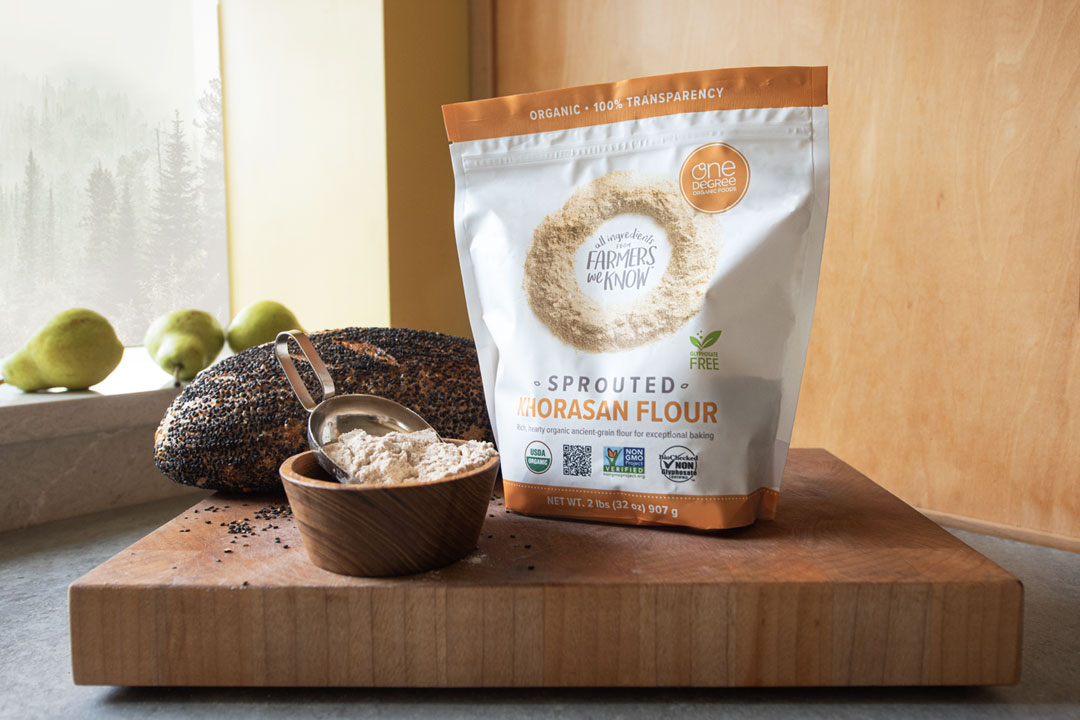 Whisk up a batch of Our Sprouted Khorasan Flour Orange Cardamom Raspberry Muffins
Whisk up a batch of Our Sprouted Khorasan Flour Orange Cardamom Raspberry Muffins
Taste: Earthy and nutty taste.
Ingredients: Khorasan is a, nutritious ancient grain. Grown veganically, without chemicals, or animal-based fertilizers, then sprouted to maximize nutrition, digestibility, and flavor.
Best used for: This type of flour is best used in savory baking, like pie crusts, pasta, bread, bagels, and pizza dough or sweet recipes like muffins and cookies.
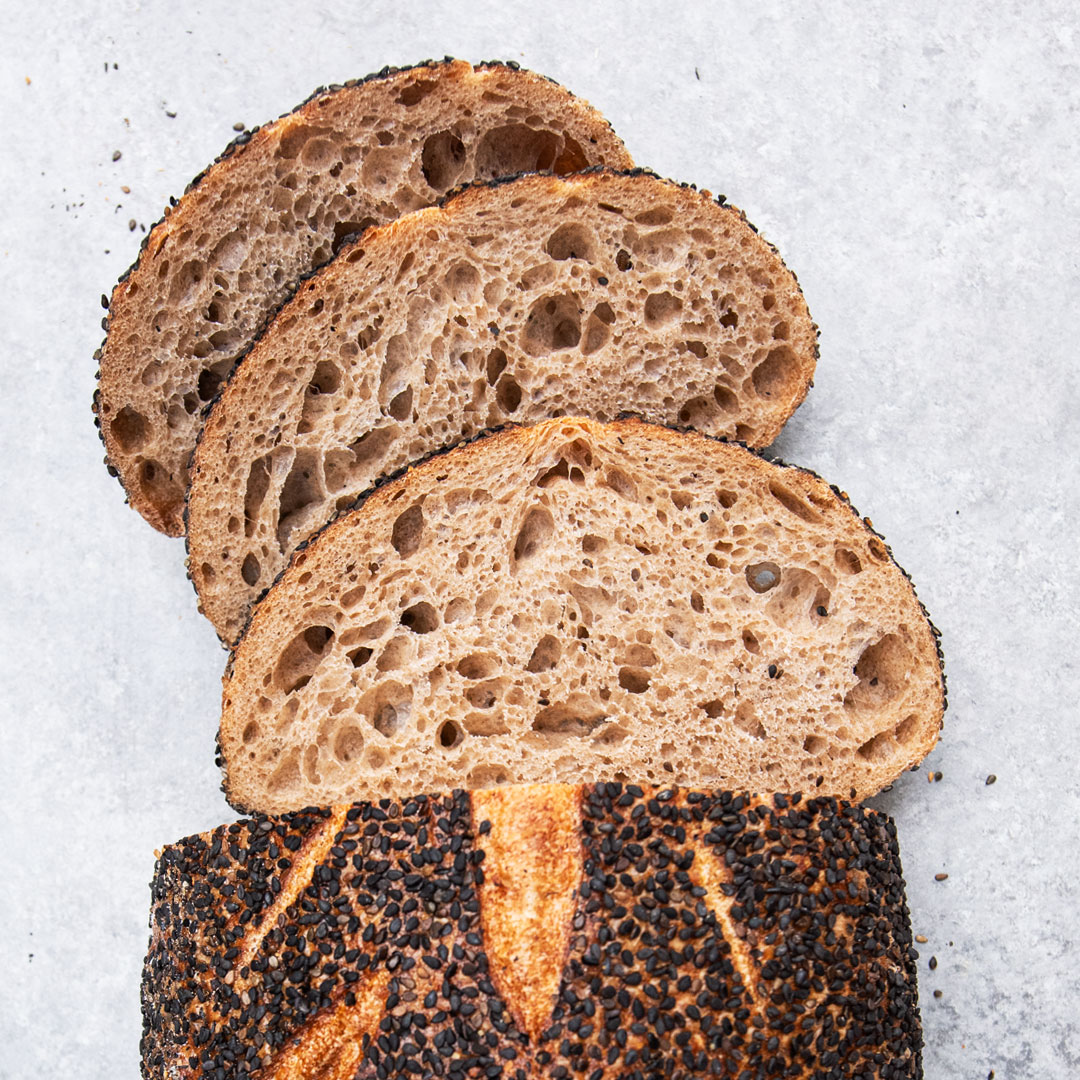
For baking inspiration, head to our Family Recipes and bake your way through our family favorites, desserts, breakfasts, snacks, and more recipes made with love and the goodness of simple ingredients.
Follow us on Facebook, Instagram, and Pinterest for more wholesome content that will boost your feed with sprouted recipes and products that make baking easy and nutrition delicious.
Reference List
- The History of Sourdough Bread, Professional Bakers: Certification in Baking As Lifestyle Medicine, 2015. Available from: https://www.sourdough.co.uk/the-history-of-sourdough-bread/Accessed February, 2024
- Sprouted grains and sourdough: Special processes for specialty bread, Food Business News,2018. Available from: https://www.foodbusinessnews.net/articles/13050-sprouted-grains-and-sourdough-special-processes-for-specialty-bread Accessed February, 2024
- Flavor, Nutrition and Enzymes: Baking With Sprouted Grains, Oldways Whole Grain Council, 2017. Available from: https://wholegrainscouncil.org/blog/2017/07/flavor-nutrition-and-enzymes-baking-sprouted-grains#:~:text=With%20Sprouted%20Flours%2C%20Benefits%20and%20Advantages%20Abound&text=The%20enzymatic%20activity%20produced%20during,much%20less%20kneading%20is%20necessary Accessed March, 2024
